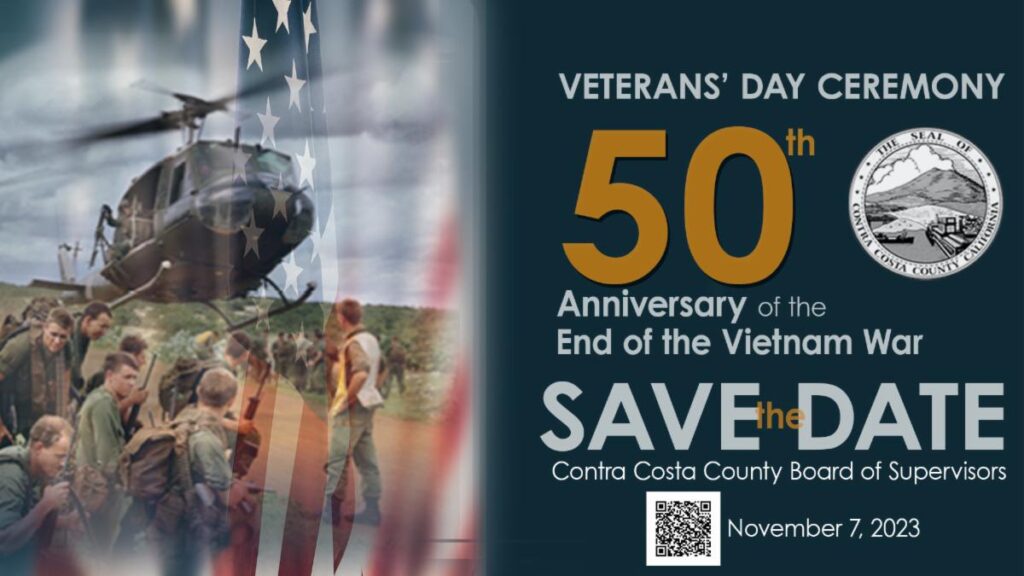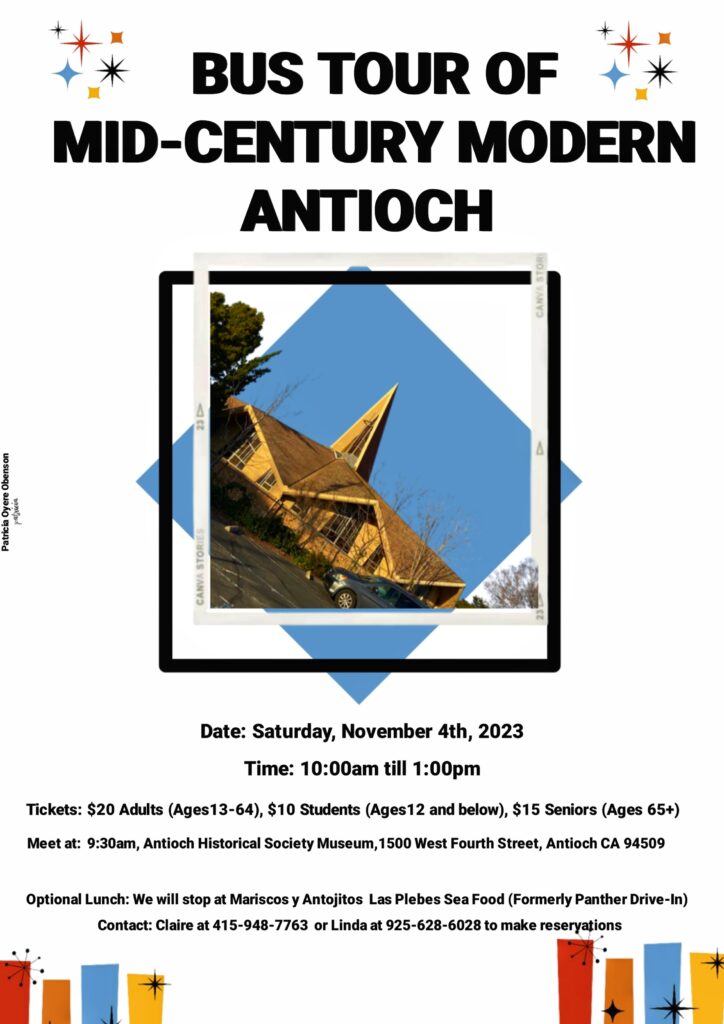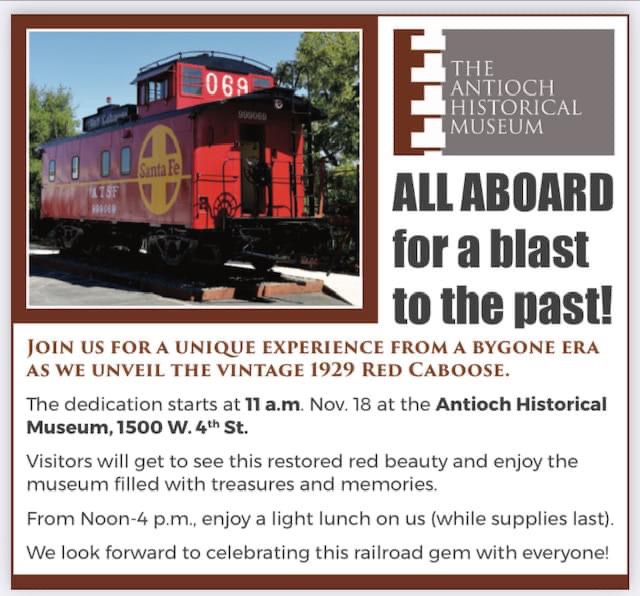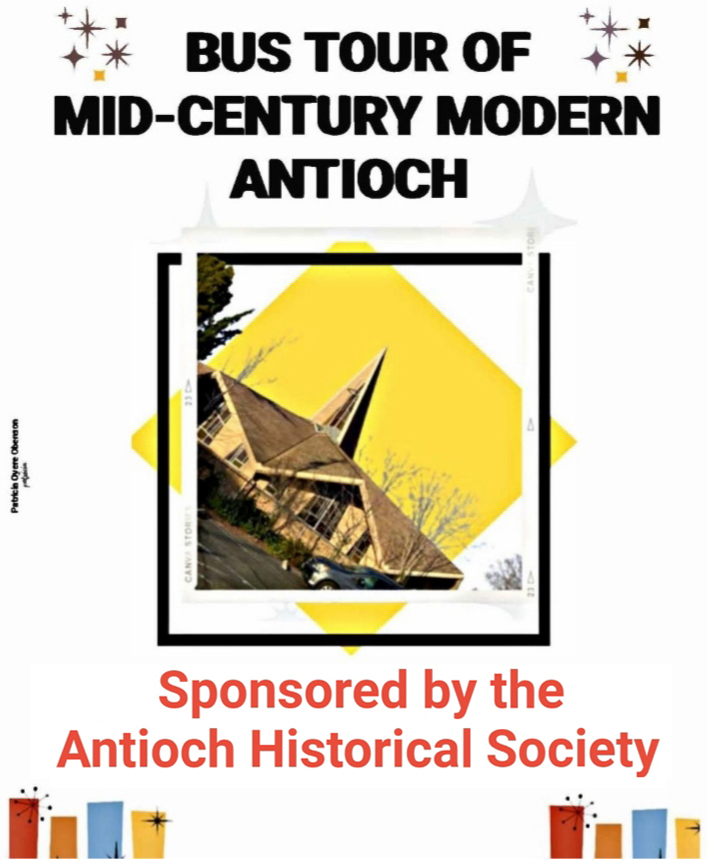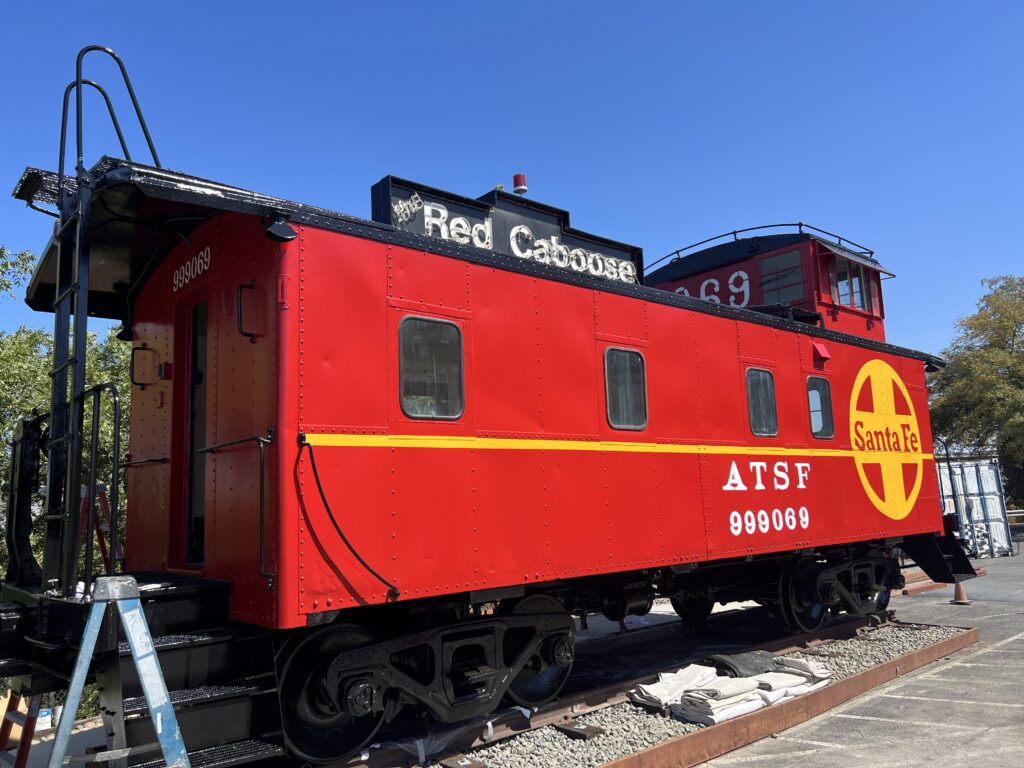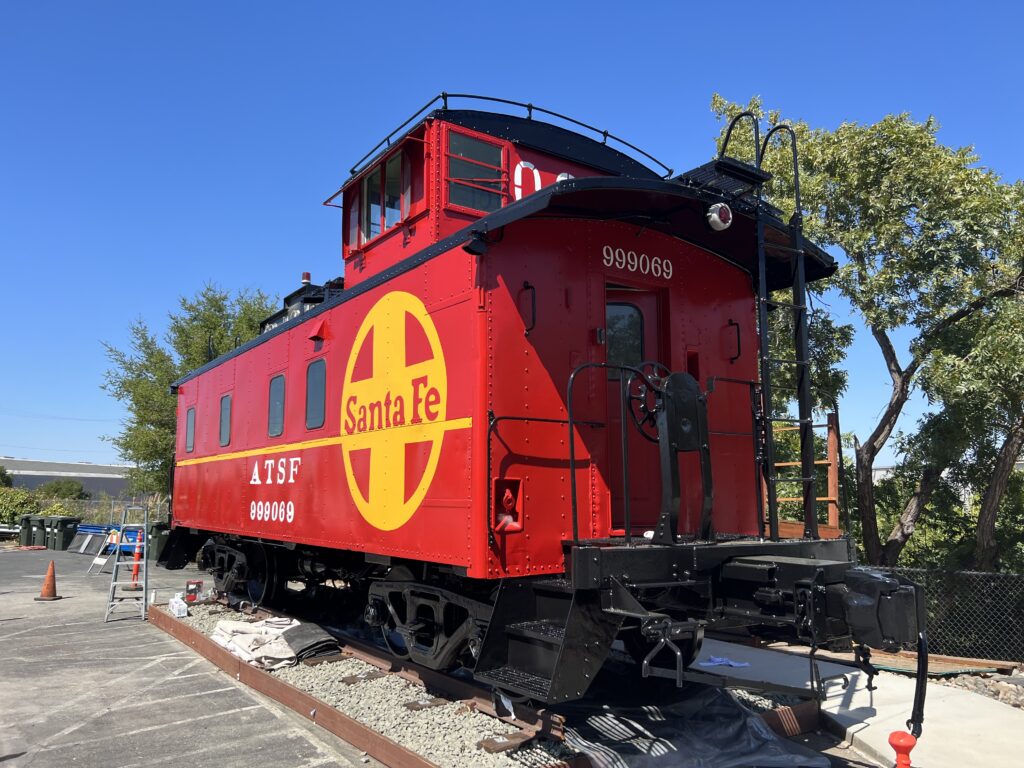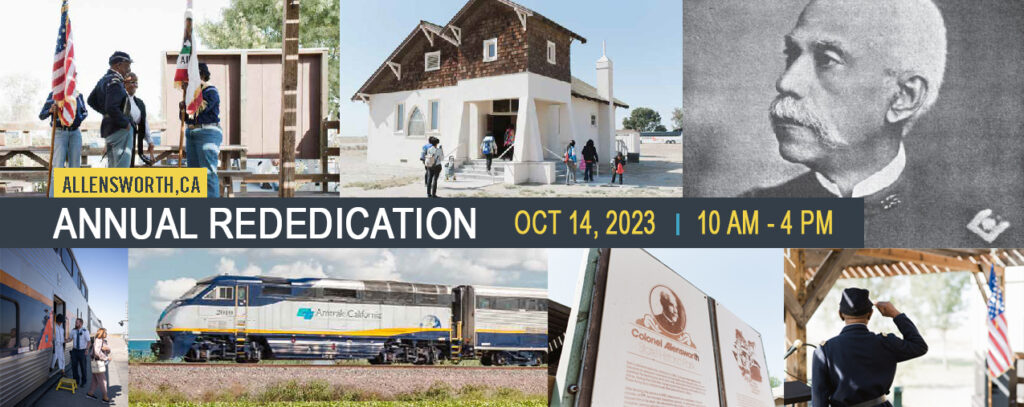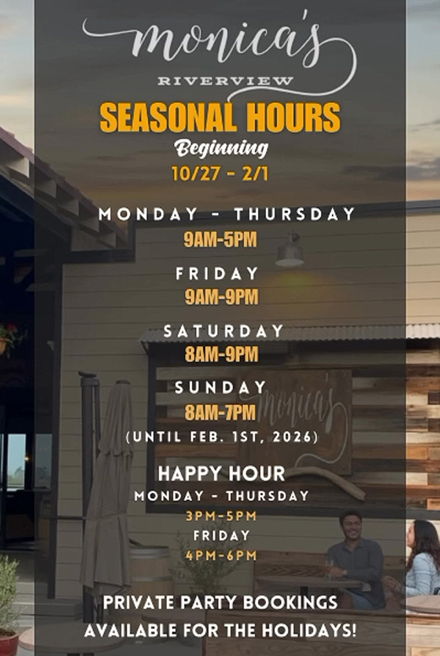Boccio family, friends gather to dedicate Red Caboose at permanent Antioch Historical Museum location
Saturday, November 18th, 2023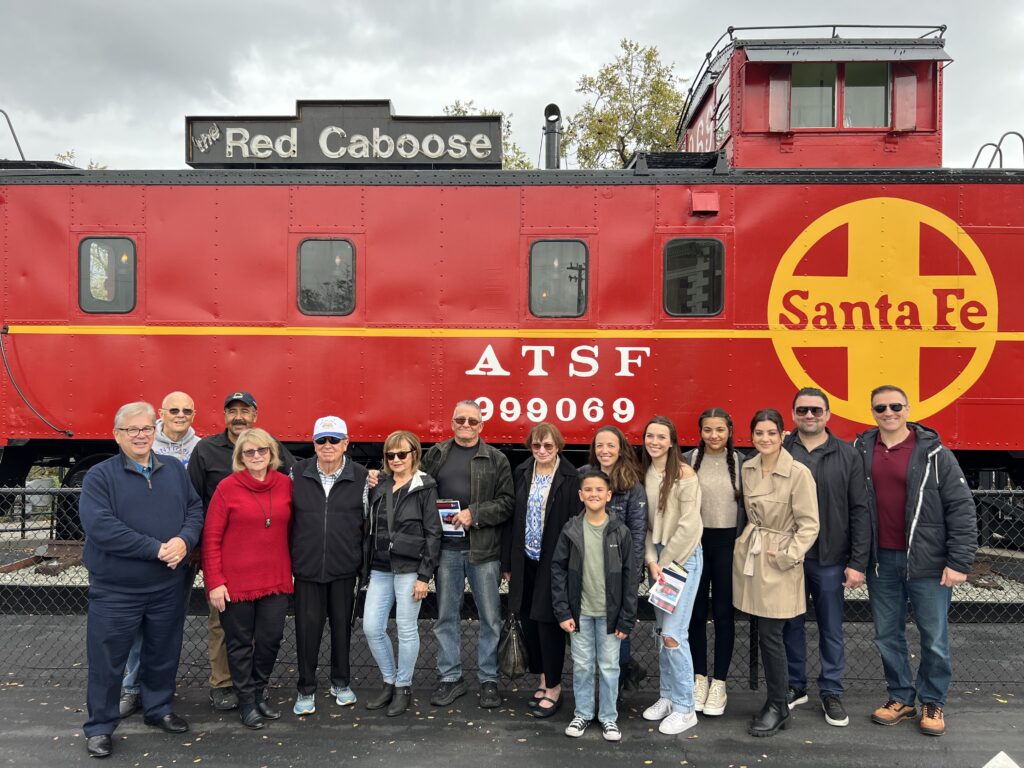
Over 100 people and contractors helped and contributed to the $325,000 project
Will be used for tours by school children, can be rented for small parties
By Allen D. Payton
After being donated and relocated in April from its former restaurant location to the grounds of the Antioch Historical Museum, the Red Caboose was dedicated by as the Boccio family, friends and supporters who gathered for a special ceremony Saturday afternoon, November 18, 2023. (See related videos of the move here, here, here and here)
“This is a great day for the City of Antioch,” said former Mayor and former Historical Society President Don Freitas who served as the MC.
“You’re going to actually be able to rent space in the caboose for parties,” he shared. “It can hold 14-16 people. It will be a heck of a place to come and have a party.”
“This is a great opportunity for the Historical Society to work with the school district to bring kids out and talk about trains and the unique role of the caboose itself,” Freitas continued.
“When I get up at night…I can still hear the train whistles and it brings back great memories,” he reminisced.
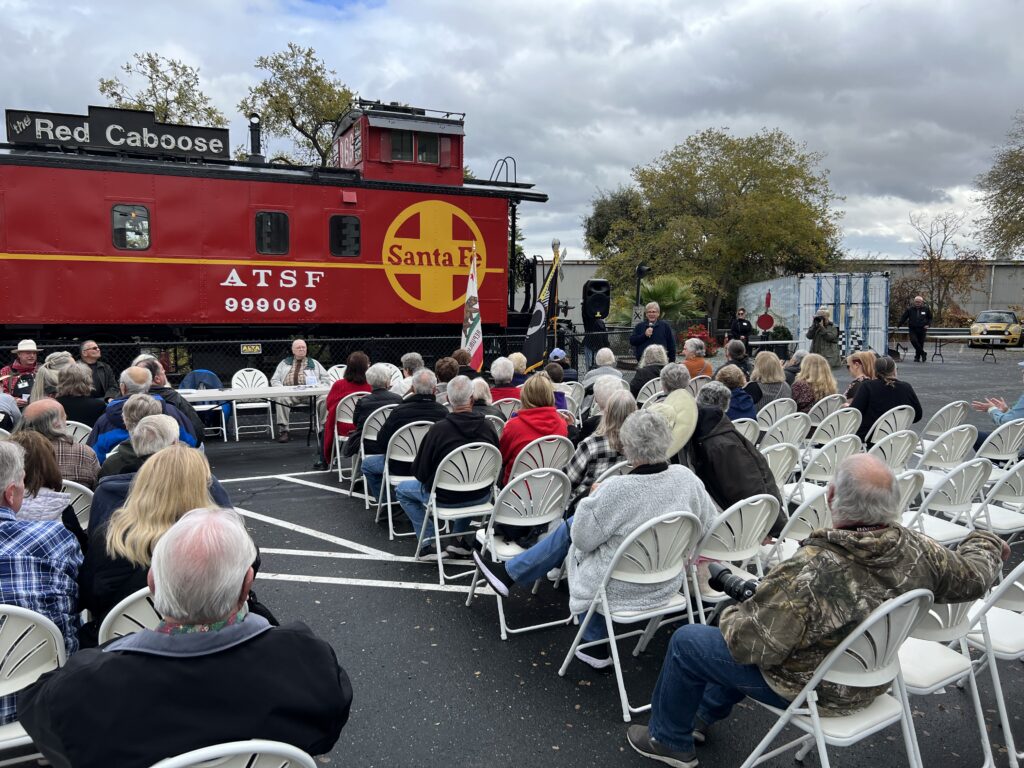
“Jim and Phyllis Boccio owned this, and it was connected to the restaurant on Fulton Shipyard Road,” Freitas explained. “I would bring people to it for meetings, and we’d have lunch inside the caboose, and they didn’t want to leave. It was wonderful.”
“We’re very excited about this project. It’s taken a long, long time. There were more than 117 individuals who contributed,” he added.
Current Antioch Historical Society President Dwayne Eubanks spoke next saying, “I want to thank the Boccio family. I had no belief that a project like this could happen. This project has infused some enthusiasm into the Historical Society.”
Jim “Mac” Martin then sang the national anthem followed by the invocation offered by Rev. Gene Davis.
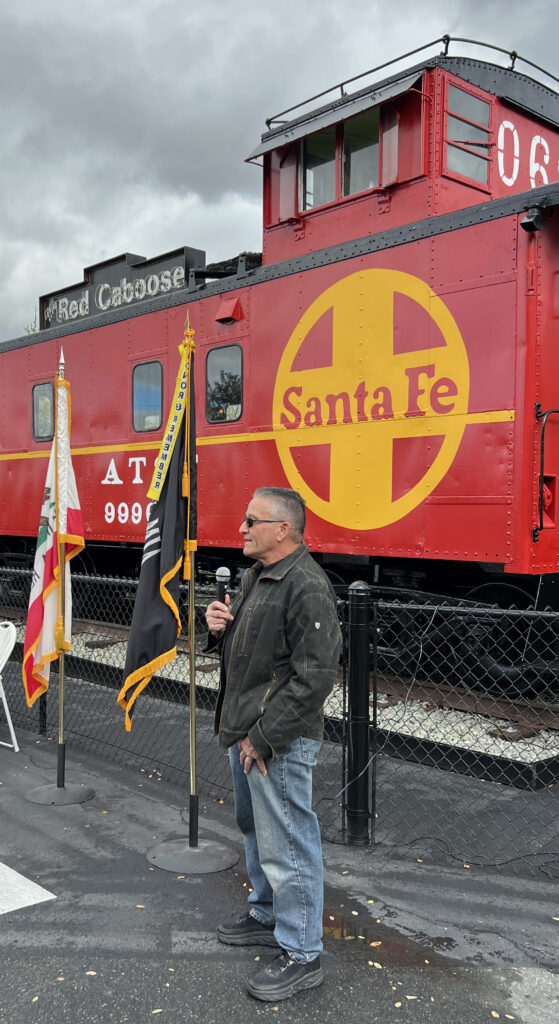
Dr. James Boccio, representing the family, shared about his parents, who have both passed away in the last few years.
“They came to Antioch during the Great Depression,” he said.
His father grew up in Antioch near where the Red Caboose Restaurant was located.
“He always had a deep feeling for the railroad,” Boccio said. “In 1982 he told me ‘I’m buying a caboose…I’m going to connect it to the restaurant and bar.’ I told him, ‘that’s a swamp. It’s going to sink into the ground’.”
“He bought it in Selma,” the younger Boccio continued. “I went by there in the morning to see how far it had sunk and he already had built a pad and that a big crane placed it on.”
He said when speaking with his mom she could think of eight restaurant operators through the years, some of whom were in attendance at the ceremony.
“My mom was never a big caboose fan,” Boccio revealed. “She kind of felt it was my dad’s fifth, illegitimate child.”
He shared how his parents’ house that they lived in on E. 18th Street his father “had moved from Walnut Creek with the Trosts. So, I wasn’t surprised he could have the caboose moved.”
“In 2022, there was a fire that burned the back half (of the restaurant). But nothing happened to the caboose,” Boccio stated. “There was smoke damage and soot that was cleaned up.” (See related article)
“The family got together with my mom and my sister Norma suggested we get it over to the Historical Society. My mom said, ‘Call Tom Menasco’,” he continued.
“He’s a bulldog they let out of the cage,” Boccio said to laughter from the audience.
Menasco then led the effort to relocate the caboose.
“We actually sold the caboose and the property to Drill Tech with the deal he donate the caboose, which he did,” Boccio added.
He described the move saying, “it was like an orchestra.”
“We really want this to be an educational facility for young children who maybe have never been on a train other than BART,” Boccio concluded.
Doug Debs, Lead Docent of the Niles Canyon Railway then shared the importance for and explanation of the purpose of a train’s caboose. It’s where the engineer and “eyes and ears of the crew” could see the train. The cabin on top is called the cupola and was where the freight cars could be viewed and the windows could be slid open so the crew could lean way out and see around curves, he explained.
Freitas then recognized three individuals who were key to the project.
“There were a lot of volunteers, a lot of help,” he said and then mentioned Project Superintendent “David Brink. He was the engineer. He put in a tremendous amount of time.”
Freitas then mentioned Display Designer Laura Enea Jacques, who took on the project once the caboose arrived at the museum. Finally, he mentioned Project Coordinator and Fundraiser Tom Menasco about whom he said, “is really one of the most dedicated residents in Antioch. He raised about $325,000 to do this project.”
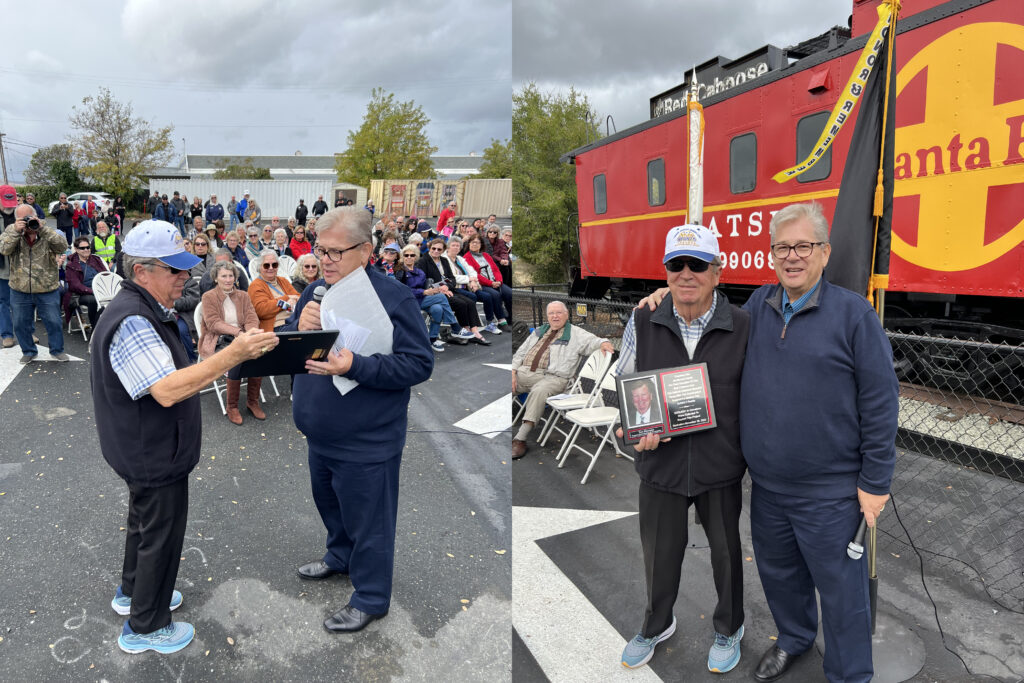
Freitas showed appreciation by presenting Menasco with a plaque.
“What’s most important to me is we made a wish become a reality,” Menasco stated. “Nineteen months ago, it was April 1, 2022, we jumped on a train with this caboose and took a long ride. We didn’t have to ask, people just handed me money. We collected $200,000 in donations from local developers and contractors.”
“I’d like to thank all the contractors who are standing in the back,” he added.
Those in attendance were then provided with brief tours of the Red Caboose and shown a video by Ronn Carter about its history and relocation. See a brief tour video, here.
The Caboose Project Team included Tom Menasco, Dave Brink, Laura Jacques, Project Advisor Don Freitas, Supervising Engineer Stan Davis and Project Advisor Eddie Beaudin. The Historical Society offered a “heartfelt thank you” to the Jim and Phyllis Boccio Family Trust who transferred ownership of the 1929 caboose to the museum and contributed financially for the construction of the display.
The Antioch Historical Museum is located at 1500 W. 4th Street at the end of Auto Center Drive and is open Wednesdays and Saturdays from 1:00 p.m. to 4:00 p.m. For more information visit www.antiochhistoricalmuseum.org.











